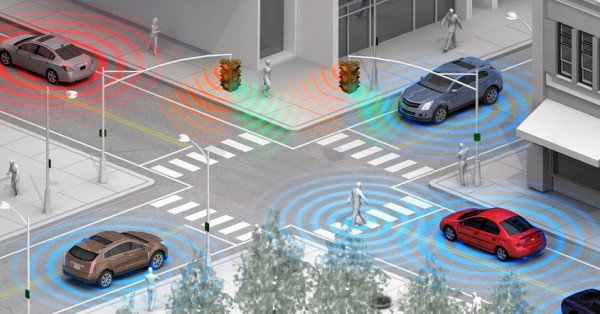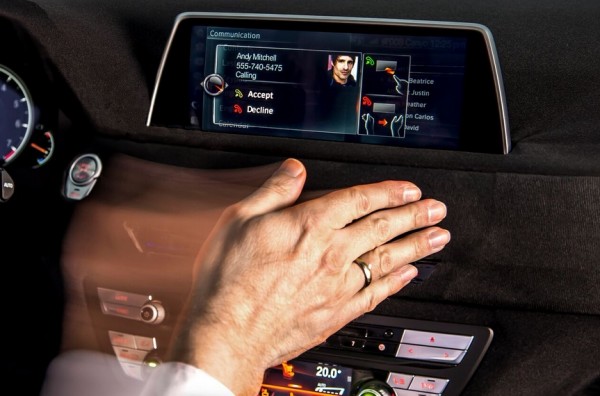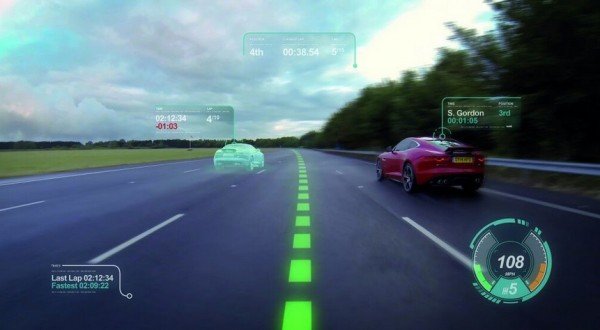Mezcla de seguridad y avances tecnológicos, las innovaciones que incorporarán los vehículos durante los próximos años permitirán hacer la conducción cada vez más a prueba de errores y sencilla, y quién sabe, puede que incluso inexistente. Estas son algunas de las innovaciones que prometen revolucionar la industria.
Desde la creación de los autos modernos en 1885, el objetivo de la industria automotora global siempre ha sido lograr hacer cada vez más cómoda y segura la conducción, introduciendo constantemente elementos que han dado como resultado las modernas máquinas que conducimos hoy en día.
Más allá de los computadores a bordo y los sistemas de asistencia, si hay algo que la industria tiene claro es que 2020 será un punto de inflexión en la historia de los autos. Y es que esta fecha se ha marcado como el límite imaginario entre el presente y el futuro, uno que, sin duda, traerá vehículos mucho más conectados.
¿Qué será lo que veremos? Si bien las especulaciones son muchas, prácticamente todas las innovaciones de las que se tiene conocimiento hasta ahora tienen que ver con la comodidad y la seguridad.

La que más llama la atención, sin duda, es la conducción autónoma, aventura que ya han iniciado los grandes fabricantes, como Mercedes-Benz, Audi, BMW, Ford, Nissan y Hyundai-Kia, quienes desarrollan a toda velocidad los elementos necesarios para hacer de esta una tecnología viable. En general, la idea es simple, aumentar la comodidad y reducir las fatalidades, eliminando el factor humano de la ecuación, que es el responsable del 99% de los accidentes.
Nissan ya anunció que en cuatro años pondrá a disposición de la organización de los Juegos Olímpicos de Tokio una flota de modelos autónomos, para más tarde iniciar su venta. Mientras tanto, Audi bate récords con el autónomo más rápido en la pista; Mercedes-Benz estudia las posibilidades en modelos conceptuales, y al igual que Kia, mira con atención a los otros fabricantes, pues ambos anuncian el estreno de sus autos recién en 2030.
Al alcance de todos
Más allá del debate sobre si las personas podrán o no manejar en el futuro, lo cierto es que hay otras tecnologías más al alcance de la mano y cuyos desarrollos ya se aprontan a llegar de una u otra forma a los autos de calle.
Uno que ya se ha podido ver es el Control por Gestos. Iniciado con el MMI Touch de Audi, donde se puede dibujar con los dedos en una superficie táctil, hoy otros fabricantes, como BMW, ya incorporan las primeras versiones de sistemas de entretenimiento que funcionan con sólo mover las manos, permitiendo desde cambiar la música, subir o bajar el volumen, hasta iniciar una llamada telefónica sin sacar la vista del camino.

La realidad virtual también será parte fundamental de los autos del futuro, la evolución del Head-Up Display será la Realidad Aumentada, que hará del parabrisas una completa pantalla que mostrará información del camino, distancias con los autos cercanos, información acerca del vehículo e incluso las instrucciones del GPS. Al menos así es como lo están imaginando firmas como Mini y Jaguar, cuyos prototipos han pasado con éxito las primeras pruebas.

Los GPS conectados a internet y la Interconectividad V2V (Vehicle to Vehicle) son los siguientes pasos. La información en tiempo real de lo que sucede con el tráfico, los semáforos e incluso los autos que se encuentran alrededor se ha convertido en la obsesión de los fabricantes, quienes se han unido para probar los primeros modelos de este concepto en Europa, lo que, sin duda, revolucionará la forma en que conduciremos los próximos años.
Fuente: Carolina Rojas Arenas
English
2020: the year in which cars will change forever
Mixture of security and technological advances, the innovations that vehicles will incorporate during the next few years will make driving increasingly error-proof and simple, and who knows, maybe even non-existent. These are some of the innovations that promise to revolutionize the industry.
Since the creation of modern cars in 1885, the aim of the global automotive industry has always been to make driving increasingly comfortable and safe, constantly introducing elements that have resulted in the modern machines we drive today.
Beyond the onboard computers and the assistance systems, if there is one thing that the industry is clear about, 2020 will be a turning point in the history of the cars. And it is that this date has been marked as the imaginary limit between the present and the future, one that, without a doubt, will bring much more connected vehicles.
What will we see? Although the speculations are many, practically all the innovations that are known until now have to do with comfort and safety.
The one that catches the attention, without a doubt, is the autonomous driving, adventure that has already started the big manufacturers, such as Mercedes-Benz, Audi, BMW, Ford, Nissan and Hyundai-Kia, who develop at full speed the necessary elements to make this a viable technology. In general, the idea is simple, increase comfort and reduce fatalities, eliminating the human factor from the equation, which is responsible for 99% of accidents.
Nissan already announced that in four years will make available to the organization of the Olympic Games in Tokyo a fleet of autonomous models, to later start its sale. Meanwhile, Audi breaks records with the fastest autonomous on the track; Mercedes-Benz studies the possibilities in conceptual models, and like Kia, looks carefully at the other manufacturers, as both announce the release of their cars just in 2030.
Within everyone's reach
Beyond the debate on whether or not people can handle in the future, the truth is that there are other technologies more at hand and whose developments are already set to arrive in one way or another to street cars.
One that has already been seen is Control by Gestures. Started with the Audi MMI Touch, where you can draw with your fingers on a touch surface, today other manufacturers, such as BMW, already incorporate the first versions of entertainment systems that work just by moving your hands, allowing you to change the music, raise or lower the volume, until starting a phone call without looking out of the way.
Virtual reality will also be a fundamental part of the cars of the future, the evolution of the Head-Up Display will be the Augmented Reality, which will make the windshield a full screen that will show road information, distances with nearby cars, information about the vehicle and even GPS instructions. At least that is how they are imagining signatures such as Mini and Jaguar, whose prototypes have successfully passed the first tests.
GPS connected to the Internet and V2V Interconnectivity (Vehicle to Vehicle) are the next steps. The real-time information of what happens with traffic, traffic lights and even the cars that are around has become the obsession of the manufacturers, who have come together to test the first models of this concept in Europe, which It will undoubtedly revolutionize the way we will conduct the next few years.
Source: Carolina Rojas Arenas
Hi! I am a robot. I just upvoted you! I found similar content that readers might be interested in:
http://mtonline.cl/2016/05/2020-el-ano-en-que-los-autos-cambiaran-para-siempre/
Downvoting a post can decrease pending rewards and make it less visible. Common reasons:
Submit
No sabia que ya tantas compañias estaban trabajando en los autos de conducción automática. No se si seria capaz de dejar a mi auto conduciendo solo, me darían muchos nervios y mas en la ciudad que vivo. Me parecio muy interesante tu post, tienes mi voto (: continua con mas información de interés. Saludos
Downvoting a post can decrease pending rewards and make it less visible. Common reasons:
Submit
Gracias por tu apoyo
Downvoting a post can decrease pending rewards and make it less visible. Common reasons:
Submit